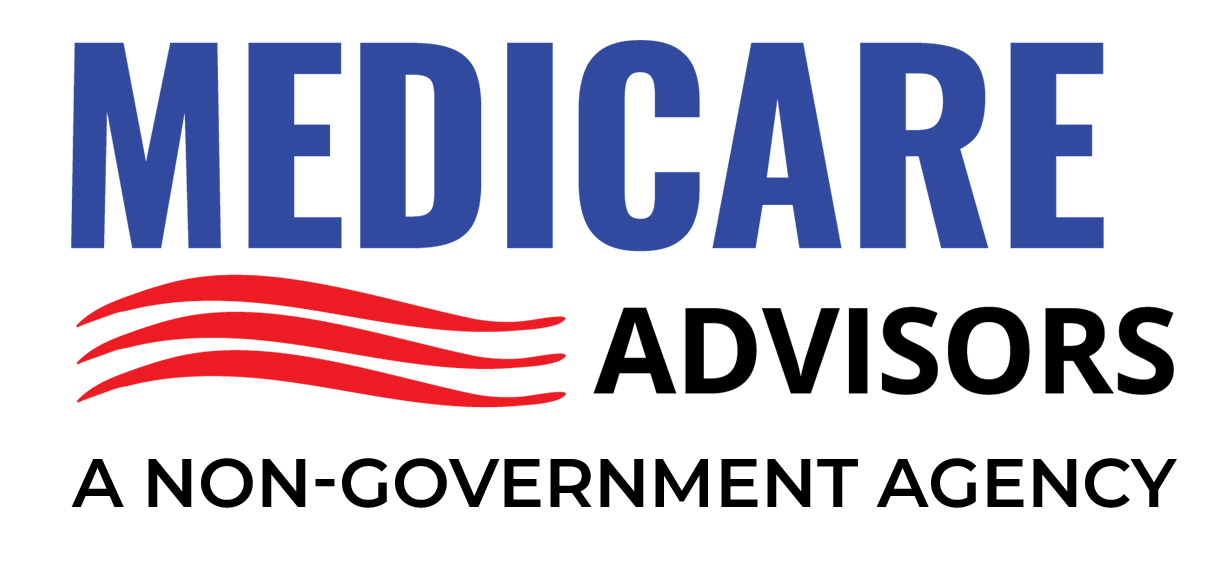Cancer is a major health concern for seniors, and it’s natural to question whether Medicare continues to be your steadfast ally after age 76. The short answer is yes, there is coverage—but the details can get complicated. This article will guide you through Medicare coverage for cancer treatment after age 76, address the many layers of Medicare Advantage, Medigap, and chemotherapy coverage, and help you weigh the pros and cons of each.
“In my experience, many seniors don’t realize how comprehensive Medicare can be for cancer treatment,” says Henry Beltran, the owner of Medicare Advisors. “Yet it’s crucial to understand your choices, because the right plan can save you thousands of dollars, while a wrong plan might leave you financially or medically vulnerable.”
Below, you’ll find sections explaining Original Medicare coverage, Medicare Advantage (Part C), Medigap (Medicare Supplement), Part D prescription drug coverage, and more. Plus, we will honestly highlight potential drawbacks with each choice. Let’s dive in!
Coverage Basics: Understanding Medicare After Age 76
The structure of Medicare doesn’t really shift once you hit 65, but after age 76, certain factors might impact how you interact with your Medicare coverage, especially if you have cancer or may soon face a cancer diagnosis.
- Original Medicare (Part A and Part B)
- Part A: Hospital insurance covering in-patient stays, skilled nursing facility care, hospice, and sometimes home health care.
- Part B: Medical insurance covering doctor’s services, outpatient care, preventive services, and necessary medical supplies.
- Medicare Advantage (Part C)
- An alternative to Original Medicare that includes Part A and Part B, often with additional benefits such as dental, vision, and sometimes prescription drugs.
- Medigap (Medicare Supplement Insurance)
- Optional private insurance that helps cover cost-sharing, such as deductibles, coinsurance, and copayments under Original Medicare.
- Part D (Prescription Drug Coverage)
- Covers many outpatient prescription drugs, which can include chemotherapy medications, anti-nausea drugs, and other cancer-related medications that aren’t covered by Part B.
For people seeking the best Medicare plans for cancer patients, it’s essential to know that Medicare coverage remains available and can be quite robust—even after you surpass your 76th birthday. However, some private insurers might adjust their rates based on age, medical underwriting, or plan type, so proceed with caution and awareness.
Find Medicare Plans in 3 Easy Steps
We can help get up to $0 monthly premium Medicare plans
What Does Medicare Cover for Cancer Treatment After Age 76?
Cancer treatment is multifaceted and might entail radiation therapy, chemotherapy, surgery, imaging, or other specialized treatments like immunotherapy. Let’s take a thorough look at how the parts of Medicare work for each aspect of cancer care.
- Part A Coverage for Cancer Care
- Hospital Inpatient Stays: If you require surgery or inpatient hospitalization for complications, Part A typically covers the room, meals, nursing care, and certain medications administered while you’re in the hospital.
- Skilled Nursing Facility: After a hospital stay of at least three days, if you require rehabilitative care, you might receive coverage for stays in a skilled nursing facility (SNF).
- Hospice Care: For end-of-life care, Part A covers hospice services, including pain relief and symptom management.
- Part B Coverage for Cancer Care
- Chemotherapy and Radiation Therapy: Medicare Part B generally covers these if they’re administered in an outpatient setting (like a doctor’s office or a clinic).
- Diagnostic Tests: Imaging tests such as MRIs, CT scans, and PET scans are usually covered, but subject to Part B coinsurance (typically 20%).
- Physician Services: Doctors’ appointments, second opinions, and consultations are generally covered under Part B.
- Preventive Screenings: Mammograms, colonoscopies, and other preventive screenings relevant to your cancer risk are usually covered.
- Part D Coverage for Cancer Medications
- Oral Chemotherapy and Prescription Drugs: If chemotherapy pills are self-administered at home, they typically fall under Part D.
- Supportive Medications: Medications for pain management, anti-nausea drugs, and other supportive therapies often come under Part D coverage.
Key Note: Keep a close watch on the difference between Part B and Part D coverage for chemotherapy. When chemo is administered at a clinic or doctor’s office, it typically falls under Part B. When you take oral chemo at home, it often goes under Part D.
Why Age 76 Matters for Medicare Coverage
While Medicare rules don’t drastically change for individuals past the age of 76, your healthcare needs may intensify or shift as you get older. Costs can add up quickly if you’re dealing with cancer treatments, which frequently involve high-cost procedures and medications.
- High Out-of-Pocket Costs: Original Medicare has deductibles for Part A (per benefit period) and Part B (annual deductible), and you will also pay coinsurance under Part B (often 20%) unless you have Medigap or a Medicare Advantage plan with specific copay structures.
- Medicare Supplement Underwriting: After your initial enrollment period, if you wish to add a Medigap plan (like Plan G or Plan N), you might face medical underwriting or higher premiums, especially if you wait until after age 76.
For these reasons, selecting a comprehensive plan that aligns with your budget and healthcare needs is essential.
Find Medicare Plans in 3 Easy Steps
We can help get up to $0 monthly premium Medicare plans
Medicare Advantage (Part C) for Cancer Patients
Do Medicare Advantage plans cover chemotherapy? Yes, they do. Medicare Advantage, also known as Part C, bundles Part A and Part B coverage, and often includes Part D prescription drug coverage. These plans are required by law to offer coverage equivalent to Original Medicare, but the structure and out-of-pocket costs can differ significantly.
Pros of Medicare Advantage
- Additional Benefits: Many plans include extras like dental, vision, hearing aids, and wellness programs.
- Maximum Out-of-Pocket Limit: Medicare Advantage plans must have an out-of-pocket maximum for Part A and Part B expenses. Once you hit that limit, the plan pays 100%.
- Convenience: Typically, you have a single membership card that covers your medical care and prescriptions (if the plan includes Part D).
Potential Drawbacks of Medicare Advantage
- Network Restrictions: Most Medicare Advantage plans have HMO or PPO networks. You may need referrals to see specialists or stick to local networks, which can be limiting if you require care from a top cancer hospital out of state.
- Cost-Sharing: While you might see lower premiums, you can face higher copays or coinsurance for specialized treatments like chemo or radiation.
- Plan Variability: Plans change each year, so benefits or premium costs can fluctuate, forcing you to reevaluate annually.
“When I talk to seniors, especially those facing cancer, I always emphasize the network constraints,” mentions Henry Beltran. “It’s heart-wrenching when a patient finds out the oncologist they trust isn’t in their plan’s network. So make sure you do your homework thoroughly.”
Medigap vs. Medicare Advantage for Cancer Patients
A common debate among seniors is Medigap vs Medicare Advantage for cancer patients. If you remain on Original Medicare and purchase a Medigap plan, your out-of-pocket costs for Part B services can become more predictable—particularly crucial if you’re dealing with frequent doctor visits or expensive treatments.
Medigap (Medicare Supplement) Pros
- Lower Out-of-Pocket Costs: Plans like Medigap Plan G cover nearly all of the out-of-pocket expenses except the Part B deductible.
- Freedom of Choice: You can visit any healthcare provider or hospital in the United States that accepts Medicare—no network limitations.
- No Copays for Part B Services (depending on the plan): This can be especially beneficial for seniors requiring consistent treatments.
Potential Drawbacks of Medigap
- Monthly Premiums: Medigap plans typically have higher monthly premiums than Medicare Advantage.
- No Prescription Coverage: You must also enroll in a standalone Part D plan, which means a separate premium.
- Medical Underwriting: If you apply for Medigap coverage outside of your guaranteed issue period, you could face higher premiums or even denial based on your medical history.
Which is Better?
- If you prefer a wider choice of hospitals and doctors and want fewer out-of-pocket costs during cancer treatment, Medigap might be your best friend.
- If you’re comfortable with networks and are looking for lower or even $0 premiums but can manage copays or coinsurance, Medicare Advantage could work for you.
Pro Tip: Always factor in the cost of expensive cancer treatments (like chemo), frequent doctor visits, lab work, and imaging when deciding. A few dollars saved on monthly premiums can be overshadowed by hefty bills for specialized treatments.
Prescription Drug Coverage for Cancer Treatment After Age 76
Part D is essential for many cancer patients because oral chemotherapy and certain supportive medications can be expensive. Each Part D plan sets its own formulary (the list of covered drugs), cost tiers, and cost-sharing requirements.
- Coverage Phases: Part D has four phases—deductible, initial coverage, coverage gap (the “donut hole”), and catastrophic coverage. Depending on how expensive your drugs are, you may move quickly through these stages.
- Coverage Gap: In 2025, legislative changes will effectively eliminate the donut hole for many, but in the meantime, you usually pay 25% of brand-name and generic drug costs while in the gap.
- Catastrophic Coverage: After you exit the coverage gap, you usually pay a small coinsurance or copayment for covered drugs for the remainder of the year.
Important: Some Medicare Advantage plans include Part D coverage, but again, ensure your cancer drugs are on their formulary.
The Best Medicare Plans for Cancer Patients: Factors to Consider
1. Network vs. No Network
- Medicare Advantage can limit your provider choices, while Medigap allows you to see any provider that accepts Medicare.
2. Monthly vs. Out-of-Pocket Costs
- Some Medicare Advantage plans have very low premiums, but you might pay higher cost-sharing for each treatment or visit. Medigap generally has higher monthly premiums but fewer surprise bills.
3. Prescription Drug Needs
- Ensure that any plan you choose covers your particular cancer drugs, which might be very costly or brand-name only.
4. Personal Preferences
- Some people dislike the idea of private companies managing their healthcare but enjoy the extras that MA plans can offer. Others want the widest network possible and fewer copays.
5. Flexibility
- “Medicare Advantage plans can be great if you want an all-in-one solution,” notes Henry Beltran. “But if you don’t mind paying a bit more each month for the peace of mind that virtually all providers are in-network, Medigap can be a better choice.”
“People Are Always Asking…”
It’s common to get questions from fellow seniors like:
- “Does Medicare still cover me even though I’m over 76?”
- “If I have advanced cancer, do I qualify for special enrollment?”
- “How do I decide between Medicare Advantage and Medigap?”
- “What if I move states?”
In truth, you never lose Medicare coverage because you’re older. But you should re-check your plan options if you move or if your health changes drastically. Additionally, special enrollment periods may apply if you qualify for Extra Help or if you lose employer coverage.
When it comes to choosing between Medigap and Medicare Advantage, consider your current and future healthcare providers, your prescription drug needs, and your willingness to handle out-of-pocket costs.
Find Medicare Plans in 3 Easy Steps
We can help get up to $0 monthly premium Medicare plans
Coverage Gaps and Limitations
Regardless of which path you choose, it’s vital to understand the gaps.
- Original Medicare often leaves you with 20% coinsurance for Part B services. This 20% can be enormous for costly treatments like chemotherapy or advanced imaging.
- Medicare Advantage sometimes has copays or coinsurance for each individual chemotherapy session. If you require frequent treatments, these copays can balloon quickly.
- Prescription Drug Plans can push you into the coverage gap if your chemo drugs are expensive, leading to higher out-of-pocket costs.
A small oversight: Some individuals forget to verify if their chosen oncologist is in-network for their Medicare Advantage plan. This simple slip can mean you either pay out-of-network rates or have to switch doctors. A crucial step is to call your physician’s office or check the plan directory.
Common Mistakes Seniors Make
- Thinking “I’m too old for this coverage”: Medicare doesn’t cut you off at any age, but the type of plan you pick can drastically affect your financial burden.
- Ignoring Plan Changes: Medicare Advantage and Part D plans change formularies or costs each year. Reviewing your plan during the Annual Enrollment Period (Oct 15–Dec 7) is vital.
- Missing Out on Medigap: If you skip Medigap when first eligible, you might face medical underwriting later. This can result in higher premiums or denial, especially with a cancer diagnosis.
- Forgetting About Out-of-Pocket Maximums: If your Medicare Advantage plan has an out-of-pocket max of $7,550, you could end up paying that in a year if your treatments are costly.
- Not Comparing Drug Plans: Even if you have a stable drug regimen, the costs and coverage tiers might change from year to year.
Step-by-Step: Enrolling in the Right Medicare Coverage After Age 76
- Evaluate Your Health Needs
- How frequently do you see doctors?
- Do you anticipate needing ongoing treatment such as chemo or radiation?
- Check Your Providers
- Are they in-network for the Medicare Advantage plans you’re considering?
- Do they accept Medicare assignment if you go with Original Medicare plus Medigap?
- Compare Plan Costs
- Monthly Premiums for Medigap vs. Medicare Advantage
- Out-of-Pocket cost for chemo, radiation, hospital stays, and specialists.
- Enroll or Switch During the Right Period
- Annual Enrollment Period (AEP): October 15 – December 7 (for Medicare Advantage & Part D).
- Medigap Open Enrollment: The six-month period after you turn 65 and enroll in Part B, or possibly a Guaranteed Issue period under special conditions.
- Monitor Your Coverage Yearly
- Plans can change; your health can change. Reassess coverage each year to ensure it’s still meeting your needs.
Find Medicare Plans in 3 Easy Steps
We can help get up to $0 monthly premium Medicare plans
Drawbacks and Downsides
Although Medicare is a fantastic resource, it’s not perfect:
- Complexity: The sheer variety of plans can overwhelm many.
- Potential High Premiums: Medigap can become pricey as you age, though it usually covers more.
- Network Restrictions: Medicare Advantage can limit providers.
- Prescription Gaps: Some cancer drugs might have high out-of-pocket costs in certain Part D plans.
- Coverage Exclusions: Always read the plan documents to see if there are any specific limitations or waiting periods for certain treatments or if you’re switching from one plan to another mid-year.
“I had a client who forgot about her plan’s out-of-pocket maximum and was stunned by the bills for her chemo,” recalls Henry Beltran. “She reached the maximum, and after that, it was covered 100%, but until she hit that threshold, it felt like an avalanche.”
A Closer Look at Copays, Coinsurance & Deductibles
- Part A Deductible: Applied per benefit period, not annually. For hospital stays, you’ll pay the deductible each time you begin a new benefit period (which starts when you’re admitted and ends when you haven’t received hospital care for 60 consecutive days).
- Part B Deductible: Set annually (in 2023, it’s $226). After you pay it, you generally owe 20% coinsurance on most Part B services.
- Medicare Advantage Cost-Sharing: Typically, you may pay set copays (e.g., $20 for a specialist) or coinsurance (e.g., 20% for chemotherapy).
- Medigap: If you have Plan G, once the Part B deductible is met, nearly all Part A and B services are fully covered.
How to Find the Best Medicare Plans for Cancer Patients
- Consult a Trusted Broker: They can offer side-by-side comparisons of different plans, ensuring you see a broad range of options.
- Use the Medicare Plan Finder: Accessible on Medicare.gov, it’s a user-friendly tool that estimates your annual drug costs based on your medications and pharmacy preferences.
- Check Star Ratings: Medicare rates Advantage and Part D plans on a 5-star scale, reflecting member satisfaction and quality of care.
- Read Reviews: See what other seniors say about a plan’s customer service, claim speed, and network adequacy.
Find Medicare Plans in 3 Easy Steps
We can help get up to $0 monthly premium Medicare plans
“Reviews from real customers are invaluable,” says Henry Beltran. “But always weigh them with caution because every person’s health situation is unique.”
Reviews From Real Seniors
- Janet, 77 (Medigap & Part D): “I pay a higher monthly premium, but I get to choose any oncologist I want. My sister had Medicare Advantage, and she had to switch doctors mid-treatment. That’s not for me.”
- Ron, 80 (Medicare Advantage): “I like the low premium. My plan covers my chemo sessions, but I do pay $40 for each specialist visit. I’m fine with that trade-off.”
- Elaine, 78 (Medicare Advantage): “I had a serious breast cancer diagnosis. The plan covered most treatments, but I had to drive 45 minutes to an in-network cancer center. The cost was okay, but the traveling can be a bummer.”
Frequently Asked Questions (F&Q)
Q1: Will Medicare cover new experimental cancer treatments?
A: Medicare often covers treatments approved by the FDA, but experimental or investigational procedures might not be covered. Always discuss with your provider and check coverage specifics.
Q2: Can I switch from Medicare Advantage to Original Medicare if I’m diagnosed with cancer?
A: Generally, you can switch during the Annual Enrollment Period (Oct 15–Dec 7). In some cases, you might qualify for a Special Enrollment Period, but that’s situational.
Q3: Do Medicare Advantage plans cover chemotherapy?
A: Yes, do Medicare Advantage plans cover chemotherapy—they must provide benefits equivalent to Original Medicare. However, cost-sharing and coverage details vary.
Q4: Can I be denied Medigap if I have cancer?
A: If you’re past your Medigap Open Enrollment Period and have no guaranteed issue rights, insurers can use medical underwriting. They may charge higher premiums or deny coverage.
Q5: Do I need a referral for an oncologist under Medicare Advantage?
A: Many MA plans are HMOs requiring referrals. PPOs might not require referrals, but you pay more out-of-network.
Potential Pitfalls to Avoid
- Forgetting to Factor in Part D: Cancer drugs can be extremely costly; skipping Part D or choosing a poor plan can lead to high medication bills.
- Assuming All Specialists Are In-Network: Confirm your oncologist and hospital are contracted with your Advantage plan if you go that route.
- Underestimating Radiation Therapy Costs: Radiation can require multiple sessions; out-of-pocket charges can add up, especially if you have copays.
- Not Reading the Evidence of Coverage (EOC): This document outlines exactly what the plan pays for and what you pay.
A Brief Note on Clinical Trials
Sometimes, seniors with cancer might consider clinical trials. Medicare generally covers the standard-of-care costs in clinical trials (e.g., routine tests, doctor visits, hospital stays if needed). However, the specific experimental treatment is often covered by the trial sponsor. Always check with your plan to see how they handle clinical trial coverage.
Henry Beltran’s Personal Opinion
“I talk to folks in their 70s and 80s every single day, and I see a lot of confusion,” shares Henry Beltran, owner of Medicare Advisors. “But confusion is not your friend. My advice is to do a thorough cost comparison. Don’t just jump on a plan because it’s cheap. Think about your future medical needs and your freedom to choose providers.”
The Emotional Toll of Cancer & Importance of Good Coverage
Let’s face it: Cancer is not just a physical battle—it’s emotional and can be financially draining. Having adequate Medicare coverage after 76 can help ease some of these burdens, allowing you to focus on health and recovery rather than escalating medical bills.
“I’ve had cancer survivors tell me they felt liberated once they locked in good coverage. They could focus on healing,” says Henry Beltran. “That’s the real power of Medicare done right.”
When You Might Need Extra Help or Financial Assistance
Some seniors qualify for Medicaid in addition to Medicare if their income and assets are below certain thresholds. This is often called “dual eligibility.” Medicaid can help pay for premiums, deductibles, and other cost-sharing.
Other Assistance Programs
- Extra Help: A federal program that lowers prescription drug costs.
- Patient Assistance Foundations: Certain nonprofit organizations help cover medication or treatment costs for specific cancers or diseases.
- State Pharmaceutical Assistance Programs (SPAPs): Some states offer help with prescription coverage.
Taking Action: What Should You Do Next?
- Research: Start by listing your regular doctors, hospitals, and your current prescriptions. Then check which plans accommodate them.
- Seek Professional Advice: Consider consulting a Medicare broker or a licensed insurance agent who can show you multiple plans.
- Use Online Tools: The Medicare Plan Finder is an excellent starting point to see your options.
- Ask for Clarification: Don’t be afraid to call the plan’s customer service lines or talk to your State Health Insurance Assistance Program (SHIP) for unbiased counseling.
- Review Annually: Even if your plan worked last year, always check if it remains your best option, especially if your drug needs have changed.
“Don’t let age become a stumbling block. Just because you’re 76 or older doesn’t mean you’re not entitled to robust health coverage,” Henry Beltran reminds us.
A Quick Summary of the Pros & Cons
Original Medicare Only
- Pros: Nationwide acceptance, straightforward coverage.
- Cons: 20% coinsurance, no out-of-pocket max, potential for high bills.
Medicare Advantage
- Pros: Possible extra benefits, out-of-pocket max, can include Part D, often lower premiums.
- Cons: Network restrictions, cost-sharing can be higher for specialized treatments, plan changes yearly.
Medigap (with Part D)
- Pros: Very low out-of-pocket for Part A and Part B, freedom of choice, consistent coverage.
- Cons: Higher monthly premiums, separate Part D plan, possible underwriting if you apply late.
Checklist Before Finalizing Your Plan
- Check if your oncologist/hospital is in-network (for Medicare Advantage).
- Make sure your prescriptions (especially chemo meds) are on the formulary (for Part D or Advantage plans).
- Compare the total cost (monthly premium + deductibles + copays/coinsurance).
- Examine the out-of-pocket maximum (especially crucial if you anticipate extensive treatments).
- Read the plan’s Evidence of Coverage: This is the official document that breaks down everything your plan covers, from mental health benefits to skilled nursing care.
Reviews & Final Thoughts
Linda, 82 (Medigap Plan G): “Yes, my monthly premiums are a bit high, but I’m going through chemo for lung cancer, and I pay next to nothing at each session. It gives me peace of mind.”
Charlie, 77 (Original Medicare with no supplement): “I love the simplicity, but I got surprised by a 20% bill for my radiation. If I’d known earlier, I might have bought a Medigap plan.”
Martin, 79 (Medicare Advantage PPO): “I have a relatively wide network, so my oncologist was covered. My plan has extra benefits like dental, so I like it. But I do keep an eye on those annual changes.”
With these real-life experiences, we see that coverage choices can significantly affect both the financial and emotional aspects of a cancer diagnosis. Don’t shy away from exploring all your options or switching if a plan no longer fits you.
“We spend a good portion of our lives working to enjoy our retirement, so the last thing we need is crippling medical bills,” reminds Henry Beltran. “Take advantage of the resources out there, including unbiased counselors, and find a plan that helps you fight cancer with confidence.”
Conclusion
Age is not a barrier to Medicare coverage. Does Medicare cover cancer treatment after age 76? Absolutely—just as robustly as it does for those 65 and older. Your main task is choosing how you want that coverage structured: stay with Original Medicare plus Medigap, or join a Medicare Advantage plan that suits your budget and needs.
Whether you prefer predictable costs, a broader network, or lower premiums, the decision is a personal one that must account for your health status, personal finances, and desired level of freedom.
Take charge: evaluate your current coverage, compare plan options annually, and make sure your oncologists, specialists, and medications are fully covered. A well-chosen Medicare plan can safeguard both your finances and peace of mind as you navigate cancer treatments in your golden years.
“Medicare, if done right, becomes your shield,” says Henry Beltran, “and you can direct your energy on what truly matters: battling cancer and living life to the fullest.”





